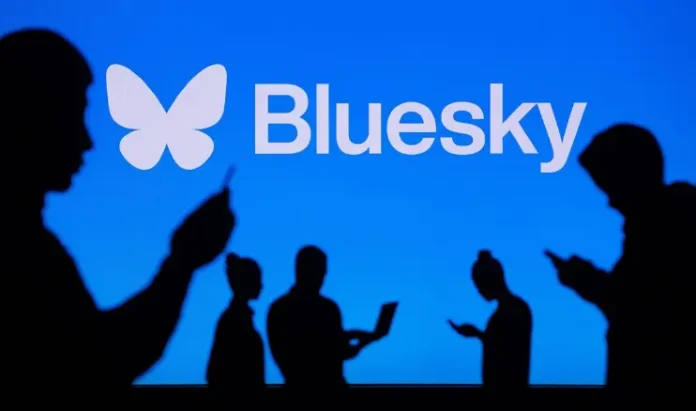The Bluesky science community is rapidly growing as researchers move to a safer, collaborative platform for academic networking. With customizable feeds, chronological posts, and strong visibility for early-career scientists, Bluesky helps the science community share research, build connections, and foster meaningful scientific collaboration worldwide.
KumDi.com
Bluesky is transforming how the science community connects online. Unlike traditional platforms, it provides a safe, collaborative space where researchers share discoveries, exchange ideas, and build networks. With its customizable feeds and professional environment, Bluesky is quickly becoming the go-to platform for scientists worldwide.
Over the past two years, scientists and research institutions have steadily migrated from traditional social media platforms to Bluesky, a decentralized and community-driven network. What began as an experiment has now become a hub for scholarly communication, offering academics a safer, more collaborative space to share ideas, publish insights, and build professional networks.
Table of Contents

Why Scientists Are Choosing Bluesky
1. A Healthier Digital Environment
Bluesky’s emphasis on a chronological feed and minimal algorithmic interference has transformed the online experience for scientists. Instead of battling with sensationalized content, researchers can engage in focused, respectful, and productive discussions. This makes Bluesky a refreshing change for academics tired of noise-driven platforms.
2. Community-Driven Feeds
One of Bluesky’s most powerful features is its customizable feeds. Scientists can join discipline-specific spaces, from astrophysics to neuroscience, ensuring they interact with colleagues who share their research interests. These community feeds create digital equivalents of academic conferences, but with ongoing, real-time discussions.
3. Visibility for Early-Career Researchers
Unlike traditional platforms where influence is often determined by follower counts, Bluesky levels the playing field. Early-career scientists gain visibility through participation in topic-driven feeds, allowing them to connect with established experts and promote their research without being overshadowed.
4. Institutional Adoption
Universities, funding agencies, and research organizations are increasingly building an official presence on Bluesky. This trend signals trust in the platform’s academic-friendly environment and strengthens its role as a credible space for official scientific communication.
Academic Engagement on the Rise
- Studies show that scientific posts on Bluesky are increasing faster than on other platforms, making it the go-to network for real-time scholarly conversations.
- Researchers report higher engagement on Bluesky compared to legacy platforms, with more likes, reposts, and meaningful replies.
- Many scientific journals are now actively engaging on Bluesky, giving new publications greater visibility and contributing to research impact metrics.
Key Benefits of Bluesky for the Science Community
| Feature | Benefit |
|---|---|
| Chronological Feed | Promotes fair visibility and reduces algorithm-driven bias |
| Custom Feeds by Discipline | Enables researchers to find relevant academic communities |
| Community Moderation | Maintains a respectful and professional environment |
| Institutional Participation | Strengthens trust and official presence in the platform |
| Research Visibility | Increases engagement and supports impact measurement |
Challenges to Consider
Despite its momentum, Bluesky faces several challenges:
- Smaller User Base: While growing rapidly, the platform still has fewer users compared to mainstream networks.
- Risk of Insularity: Strong scientific communities may unintentionally create echo chambers, limiting broader outreach.
- Commercialization Concerns: As the platform explores monetization, there is cautious optimism that its academic-friendly environment will be preserved.
Conclusion: The Future of Science on Bluesky
Bluesky is no longer just an alternative social media experiment—it is quickly becoming the platform of choice for the global science community. Its supportive design, customizable feeds, and institutional adoption have created a thriving digital ecosystem for academics. While challenges remain, the momentum is clear: scientists are building the future of scholarly communication under a bluesky of collaboration and trust.

FAQs
Why is Bluesky popular among the science community?
Bluesky is popular among the science community because it offers customizable feeds, a respectful environment, and greater visibility for researchers, making it ideal for academic collaboration.
How do researchers use Bluesky for academic networking?
Researchers use Bluesky for academic networking by joining science-focused feeds, sharing publications, and engaging in cross-disciplinary discussions that boost collaboration and visibility.
Is Bluesky better than traditional academic social media?
For many scientists, Bluesky is better than traditional academic social media because it avoids algorithm-driven noise and creates a healthier, research-focused space.
Can early-career scientists benefit from Bluesky?
Yes, early-career scientists benefit from Bluesky by gaining visibility, connecting with senior researchers, and sharing their work in an inclusive and supportive digital community.
What makes Bluesky a unique platform for scientific collaboration?
Bluesky is unique for scientific collaboration because it combines chronological feeds, community moderation, and growing institutional adoption, making it a trusted hub for research communication.




